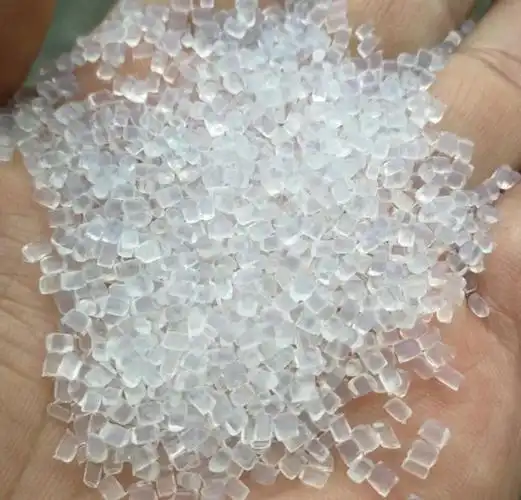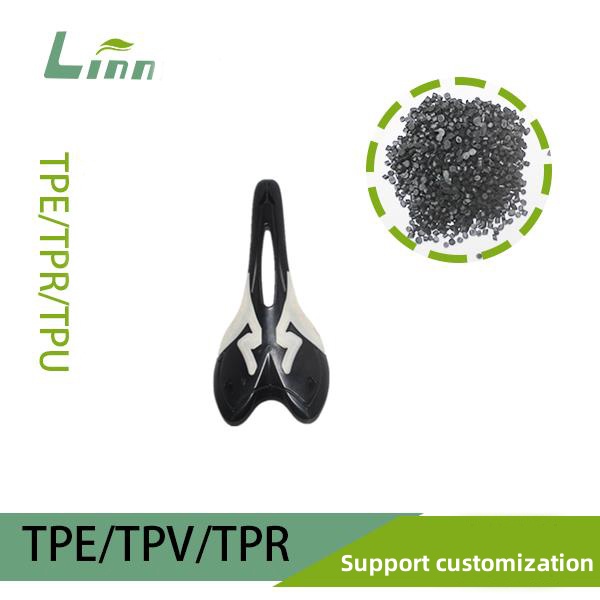As someone who’s spent years working with thermoplastic elastomers (TPEs), I’ve seen firsthand how versatile these materials can be. TPEs are prized for their rubber-like elasticity combined with the processability of thermoplastics, making them a go-to choice in industries like automotive, medical, and consumer goods. But one question I often hear is: how do you tweak TPEs to get just the right level of bounce or stretch for a specific application? Whether you’re designing a soft grip for a toothbrush or a durable seal for a car door, controlling elasticity is key. In this article, I’ll walk you through the practical ways to adjust TPE elasticity, drawing from my own experience and industry know-how, while keeping things straightforward and actionable.

Understanding TPEs and Their Elasticity
Before diving into the how-to, let’s get a quick grasp of what makes TPEs tick. TPEs are a family of materials that blend the flexibility of rubber with the ease of processing plastics. They’re made up of hard and soft segments in their molecular structure, which is what gives them their stretchy, springy nature. The elasticity of a TPE—how much it stretches before snapping back—depends on the balance of these segments, along with other factors like additives and processing techniques.
In my early days working with TPEs, I remember a project where we needed a TPE for a medical device that had to be soft enough to flex but firm enough to hold its shape under pressure. It was a challenge, but it taught me that tweaking elasticity isn’t just about picking a material—it’s about understanding the interplay of chemistry, formulation, and manufacturing. Let’s break down the main ways you can achieve different elasticities in TPEs.
Key Factors That Influence TPE Elasticity
1. Adjusting the Hard-to-Soft Segment Ratio
The heart of a TPE’s elasticity lies in its molecular makeup. TPEs, like styrene-based (SEBS) or polyurethane-based (TPU) types, have a mix of hard crystalline segments and soft amorphous segments. The hard segments act like anchors, giving the material structure, while the soft segments allow it to stretch. By tweaking the ratio of these segments, you can dial in the desired elasticity.
Higher soft segment content: Increases elasticity, making the material softer and more stretchy. This is great for applications like flexible tubing or wearable devices.
Higher hard segment content: Reduces elasticity, making the material stiffer and more rigid, ideal for structural components like seals or gaskets.
In one project, we were developing a TPE for a sports shoe sole. The client wanted a material that felt cushiony but didn’t deform permanently after heavy use. By increasing the soft segment content in a SEBS-based TPE, we achieved a higher elongation at break—around 600%—while maintaining decent tensile strength. Working closely with the material supplier to fine-tune this ratio was critical, and it’s something I recommend doing early in your project.

2. Selecting the Right TPE Type
Not all TPEs are created equal. There are several types—SEBS, TPU, TPO, TPV, and more—and each has a different baseline elasticity. Here’s a quick rundown of how they compare:
|
TPE Type |
Elasticity Range |
Key Characteristics |
Common Applications |
|---|---|---|---|
|
SEBS |
High |
Soft, stretchy, good recovery |
Grips, medical tubing |
|
TPU |
Moderate to High |
Durable, abrasion-resistant |
Shoe soles, hoses |
|
TPO |
Low to Moderate |
Stiffer, less stretchy |
Automotive parts |
|
TPV |
Moderate |
Chemically resistant, durable |
Seals, gaskets |
Choosing the right TPE type sets the foundation for your elasticity goals. For instance, if you need something super stretchy, SEBS is often a better starting point than TPO. I recall a time when a client came to us with a TPO-based prototype that was too rigid for their yoga mat application. Switching to an SEBS-based TPE with a softer formulation gave them the elasticity they needed without sacrificing durability.
3. Incorporating Additives and Fillers
Additives are like the seasoning in a recipe—they can dramatically change the outcome. To modify TPE elasticity, you can use:
Plasticizers: These soften the material, increasing elasticity. Common ones include mineral oils or phthalate-free alternatives. Adding 5-10% plasticizer to a SEBS formulation can boost elongation significantly, but you have to watch out for reduced tensile strength.
Fillers: Materials like calcium carbonate or talc can stiffen TPEs, reducing elasticity. They’re often used to cut costs, but adding too much (say, over 20%) can make the material brittle.
Reinforcing agents: Adding fibers like glass or carbon can lower elasticity but improve strength, useful for applications needing rigidity.
One lesson I learned the hard way was overusing plasticizers in a TPE for a phone case. The material became too soft, losing its shape under heat. After some trial and error, we dialed back the plasticizer to 8% and added a small amount of silica filler to balance elasticity and stability. Always test your formulation under real-world conditions to avoid surprises.
4. Blending with Other Polymers
Blending TPEs with other polymers is another trick to fine-tune elasticity. For example:
Blending with polypropylene (PP): This reduces elasticity but improves stiffness and heat resistance, common in TPO and TPV formulations.
Blending with EVA or PE: This can soften the TPE, increasing stretchiness for applications like flexible films.
In a project for a flexible packaging film, we blended a SEBS-based TPE with a small amount of low-density polyethylene (LDPE). The result was a material with just the right stretch for easy tear-off packaging, while still being tough enough to handle rough handling. Blending requires precise control, so work with a compounding expert to get the ratios right.

5. Optimizing Processing Conditions
How you process TPEs can also affect their elasticity. Injection molding, extrusion, or blow molding each has variables that influence the final product:
Melt temperature: Higher temperatures (e.g., 200-220°C for SEBS) can improve flow and elasticity by reducing internal stresses, but too high can degrade the material.
Cooling rate: Slow cooling allows better alignment of molecular chains, enhancing elasticity. Rapid cooling can lock in stresses, making the material stiffer.
Mold design: Smooth molds with gradual transitions reduce stress points, preserving elasticity.
I remember a batch of TPE seals we produced that kept cracking under flexing. The issue? The injection molding temperature was too low, causing uneven molecular alignment. Raising the barrel temperature by 15°C and optimizing the cooling time fixed the problem, giving us seals with consistent elasticity across the batch.
Practical Tips for Achieving Your Desired Elasticity
Over the years, I’ve picked up a few strategies that make the process of adjusting TPE elasticity smoother:
Collaborate with suppliers early: Material suppliers often have proprietary formulations tailored for specific elasticity needs. Share your application details—load requirements, environmental exposure, etc.—to get their input.
Test extensively: Use ASTM or ISO standards (like ASTM D412 for tensile properties) to measure elasticity metrics like elongation at break and modulus. Real-world testing, like cyclic stretching, is also crucial.
Start small: When experimenting with additives or blends, start with small batches. I’ve seen companies waste thousands on large-scale trials that could’ve been avoided with lab-scale tests.
Consider end-use conditions: A TPE that’s stretchy at room temperature might stiffen in cold environments or soften under heat. Always test under the conditions your product will face.
Balancing Elasticity with Other Properties
One thing I’ve learned is that elasticity doesn’t exist in a vacuum. Increasing stretch often means sacrificing strength or heat resistance. For example, a highly elastic TPE for a wearable device might not hold up under UV exposure. To address this, you might need to add UV stabilizers or tweak the formulation to balance properties. In one case, we developed a TPE for outdoor furniture that needed both elasticity and weather resistance. By combining a SEBS base with UV-resistant additives and a small PP blend, we hit the sweet spot.
Common Challenges and How to Overcome Them
Adjusting TPE elasticity isn’t always smooth sailing. Here are some hurdles I’ve faced and how to tackle them:
Inconsistent elasticity: This often comes from poor mixing or uneven processing. Ensure your compounding equipment is calibrated and your processing parameters are consistent.
Degradation during processing: Overheating or excessive shear can break down TPE chains, reducing elasticity. Monitor melt temperatures and screw speeds closely.
Cost vs. performance: Highly elastic TPEs with additives can get pricey. Work with your supplier to find cost-effective formulations that don’t compromise quality.

Real-World Applications and Examples
To bring this to life, let’s look at a few applications where elasticity tuning made a difference:
Medical tubing: A client needed tubing that could stretch 500% without kinking. We used a SEBS-based TPE with 10% plasticizer and optimized extrusion conditions to achieve this.
Automotive seals: For a car door seal, we needed moderate elasticity with high durability. A TPV with a balanced hard-to-soft segment ratio and 5% talc filler did the trick.
Consumer grips: A toothbrush grip required a soft, stretchy feel. An SEBS TPE with high soft segment content and a touch of mineral oil gave the perfect balance of comfort and grip.
Final Thoughts
Tuning the elasticity of TPEs is both an art and a science. It’s about understanding your material’s chemistry, experimenting with formulations, and fine-tuning processing conditions to match your application’s needs. From my years in the field, I can tell you that patience and collaboration—with suppliers, testing labs, and your team—are key to getting it right. Whether you’re crafting a stretchy medical device or a sturdy automotive part, the tools I’ve shared here can help you dial in the perfect level of bounce.
If you’re just starting out or facing a specific challenge, don’t hesitate to reach out to material experts or run small-scale tests before going all-in. The right elasticity can make or break your product’s performance, so take the time to get it right.

Related Questions and Answers
Q: Can I increase TPE elasticity without additives?
A: Yes, you can adjust elasticity by tweaking the hard-to-soft segment ratio or choosing a TPE type like SEBS with inherently higher elasticity. However, additives like plasticizers can give you more precise control without changing the base material.
Q: How do I know if my TPE is too elastic for my application?
A: Test the material under real-world conditions. Measure elongation at break and modulus using standards like ASTM D412. If the material deforms permanently or feels too soft, reduce the soft segment content or add stiffening fillers.
Q: Are there eco-friendly ways to adjust TPE elasticity?
A: Absolutely. Look for bio-based TPEs or phthalate-free plasticizers. You can also optimize processing to reduce waste, like using precise melt temperatures to avoid material degradation.
Q: What’s the easiest TPE type to work with for beginners?
A: SEBS is a great starting point. It’s versatile, forgiving in processing, and offers a wide range of elasticity options. Work with your supplier to get a formulation tailored to your needs.





